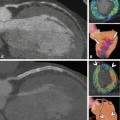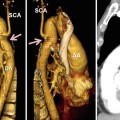Listen up, all of you tooth-holding people who want to keep them in your mouth, not on a jar on the table beside you! If you don’t understand the importance of dental X-rays, our dentist has an important message.
“X-rays help us stay ahead of the game. Catching a cavity early can make a tremendous difference between a small filling, a root canal, and complete tooth loss, says Aurora, CO, dentist Dr. Hardenberg.
X-rays are a game changer in the dental world, providing dental experts with a tool designed to help them catch cavities quicker, even those in inconspicuous spots normally unseen by the human eye. With X-ray assistance, dentists can help prevent and treat cavities and the many problems they create.
The average dental patient needs X-rays once per year. Other people may need them more frequently, like every six months. Your dentist will let you know when it’s time to take an X-ray and about their benefits.
How X-Rays Prevent and Treat Cavities
Cavities are decayed spots that have caused a hole in a tooth. Its common among dental patients of all ages. Cavities develop in several stages, each one damaging the tooth even more. Untreated cavities can lead to the need for root canals as well as tooth loss.
It starts with plaque build-up in your mouth. If plaque isn’t removed, the bacteria in your mouth begin to gobble up the sugars in your mouth, leaving acid behind. The acids dissolve tooth enamel, leading to a small cavity. Cavities that are not treated only progress until reaching the dentin and pulp. Once a cavity reaches the pulp, it can be quiet painful since the nerve and blood vessel are located in this area. Tooth pain and tooth damage generally occur when a cavity reaches the pulp.
When dentists use dental X-rays to help detect cavities, patients have extra protection on their side. X-rays can pick up cavities that dentists miss, including the stubborn ones between the teeth. After spotting the cavity, dentist can begin treatment plans to correct the problem. Dental X-rays help slow the progression .
Signs of Cavities
People often miss cavities because they expect signs and symptoms like pain, swollen lymph nodes, tooth sensitivity, and pain. Its true these signs are indicative of a cavity, but they are not always present. So often, cavities Cavities appear without any symptoms. That isn’t an issue when dental X-rays are used to detect, prevent, and treat them.
X-rays detect cavities and oral health issues, including:
- Root Cavities: Found close to the gum line, root cavities are more common in people with receding gums, along with older adults.
- Interproximal Cavities: These cavities are the pesky hiders lurking between your teeth. Brushing often misses the cavities, leaving your mouth and teeth vulnerable.
- Recurrent Decay: Recurrent decay is that which forms under existing fillings/crowns
Dentists can use many different type of dental X-ray to find cavity. Each one is designed to take images of a different area of your teeth.
Dentists have dozens of types of X-rays available to them. Some are used more often than others. The X-rays used most often in the dental profession include:
- Bitewing X-ray: This X-ray is pretty common in th dental office, especially when a dentist has concerns of cavities. The X-ray earns its name from its odd shape. It is a simple, quick digital imaging procedure. .
- Occlusal X-rays: Another common typ of dental X-ray is called an occlusal X-ray. This X-ray gives a view o an entire tooth arch.
- Panoramic X-rays: For a view of the entire mouth, dentist use the panoramic X-ray. It gives them a complete, full view of the patient’s mouth, leaving nothing in the shadows.
- Periapical X-rays: This x-ray shows the entire tooth, from crown to root tip, and the surrounding bone.
How X-rays Excel Dental Treatment
X-rays are a dentist’s BFF in cavity prevention and treatment. Digital imaging coupled with dental expertise ensures patients receive top-notch treatment and complete cavity protection. Dentists immediately leap into action to determine the treatment best for your cavity.
Dentists use severe numerous factors to decide the best course of treatment, including:
- Location and size of the cavity
- How deep the cavity is
- Infection/abscess present
- If surrounding teeth have been affected
Dentists often use fillings are a first line of treatment for a cavity, although a root canal, crown, or extraction may be necessary in some cases.
Do Kids Benefit From Dental X-rays?
Kids of all ages benefit from dental X-rays the same way as adults. In fact, dentists often recommend that children get digital imaging more often since their teeth are still developing and prone to cavities and other oral health concerns.
Anyone with teeth in their mouth benefits from dental digital imaging, better known as X-rays.
Are X-rays Dangerous?
It is understandable that X-rays give patients a bit of fright. X-rays use radiation and we all know that radiation can be dangerous. Luckily, dental X-rays use very low amounts of radiation that does not pose any risk to your health.
Dental X-rays are safe, even for children and pregnant women who pass their first trimester. It uses low levels of radiation, similar to the amount you receive on an airplane ride. It wont cause any health issues whatsoever.
Plus, dentists have safety measures they put into place to offer additional protection against any potential radiation concerns. Rest assured you are in safe hands when taking dental X-rays.
X-rays Protect Your Oral Health
Fighting cavities —the pesky little creatures— can be a full-time job, but with X-rays, you always score the TKO, getting early detection that kicks tooth decay where it hurts.Think of dental X-rays as your tag team partner for a strong, beautiful smile today, tomorrow, and for the rest of your life.
Stay updated, free articles. Join our Telegram channel

Full access? Get Clinical Tree








